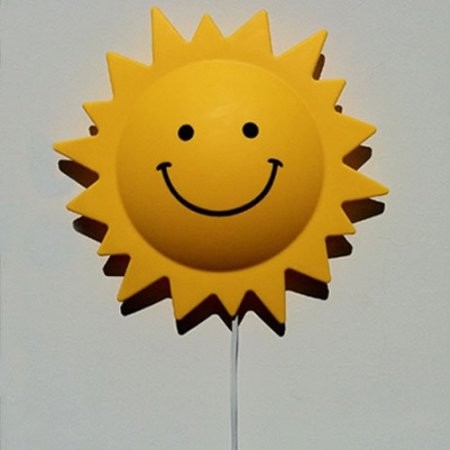A Wake-Up Light is a special light or device to help your
child know when it's all right to get out of bed in the morning.
Toddler's don't tell time, but they do understand
"lights on" or "lights off." “Lights on” means it’s time to
be awake. “Lights off” means it's time to sleep.
You want a wake-up light that is dark at night, not glowing
or otherwise lit. It's better to sleep in the dark if you can. Many wake-up
lights you purchase at the store have night lights on them that glow all night
long, so I chose to make one myself.
You can make one yourself, too. You probably already have
everything you need in your home! Just use any small lamp that you have. A
pretty Mayan salt lamp or a cute Disney lamp… or an old ugly,
stored-in-the-garage-and-meant-for-the-next-garage-sale lamp. It's fun even to
use a small green bulb (found in the outdoor Christmas lights section of your hardware
store, or in your storage… in the Christmas lights box) or a chandelier light
bulb. If the base of the bulb is too small for your lamp, you can get an
adapter piece (also found at the hardware store—most guys already know this)
that screws into the lamp and changes the base size.
Plug the lamp into the wall through an appliance timer (also
found in your store of Christmas stuff, or at the hardware store, or in the
hardware aisle of the grocery store for around $3). This is like the one you
use for your outdoor Christmas lights. Set it to go on at the wake-up time like
at 6 a.m. or 7 a.m.
As I said, you probably already have everything you need
right there at home. What you don’t have, you can find for quite cheap at your
local home hardware store. If you can use a green bulb, you can teach your
child that green means go! Talk about the light at bedtime and again in the
morning to reinforce what you expect:
"When the light is dark, it's time to sleep. When the
light is on, it's time to wake up." The light shouldn't be bright enough
to wake her up, but it will be a signal that sends a clear message for when she
does wake up. If she wakes before the light comes on, and she can't get back to
sleep, stay with her until it comes on to reinforce the meaning of the light.

Tracy Spackman
Certified Gentle Sleep Coach
Helping children sleep better one family at a time.
602-524-7610
www.GetQuietNights.com







.JPG)





